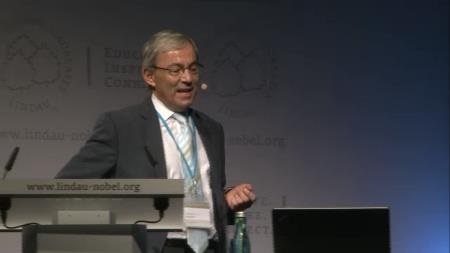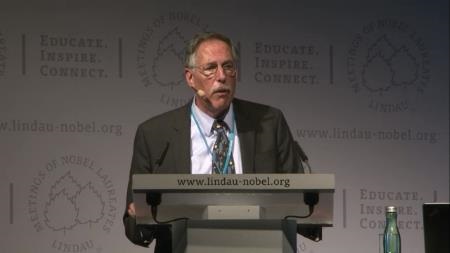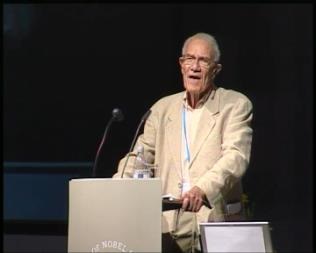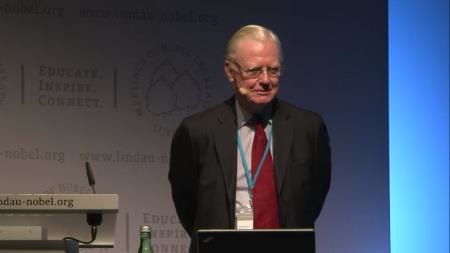Labour Markets

by Patricia Edema
Since the mid-1990s, the rate of labor productivity growth in Europe has slowed, while U.S. labor productivity growth accelerated, partly stemming from the country’s large-scale information and communication technologies investments as well as from a high productivity growth of market service sectors[1]. To both stimulate higher labor force participation and productivity growth rates in Europe, the European Commission pursues a concerted strategy – commonly referred to as “Europe 2020 Strategy”[2]. This plan intends to foster labor productivity growth in Europe with a defined labor market participation target of 75 percent for women and men aged 20 to 64 by 2020.
In light of a widening labor productivity growth gap between Europe and the United States, economist and 2010 recipient of the Sveriges Riksbank Prize Christopher Pissarides points out the need of developing specific employment structures and market policies facilitating business development and productivity growth. By comparing European employment structures with U.S. work structures in his 2011 lecture, “The Future of Work in Europe” held in Lindau, Pissarides stresses the differing levels of marketization between the U.S. and European economies. By definition, marketized work is determined as work produced outside the home and offered as services to the public. The EU produces relatively more goods and services through household production and less through the market than the United States. As a matter of fact, the U.S. takes a leading role in the creation of jobs in the market service sectors as well as in developing new sectors of work, most notably the information and communications technology producing sectors (New Economy) that started to flourish in the mid-1990s.
(00:11:53 - 00:17:20)
Productivity growth in market services has been much faster in the United States than in Europe. The biggest gaps in annual working hours of marketized work between the U.S. and Europe occur in areas of retail trade services, restaurants and hotel services, financial and business services, personal services (including personal, community, and social services) as well as in health and education service offers[3]. These gaps can be partly explained by the high taxation of services in the EU, which negatively affects the marketization of work. People in the U.S. as well as in Asian countries like Japan and Korea, in which taxation of marketized work is much lower than in the Europe, employ market services much more often than in Europe.
Failure of job creation in the service sectors cannot be ascribed to high taxation only – the high level of product market regulation in Europe also impedes business development, according to Pissarides. As per the OECD index of product market regulation, restrictive product market regulation and regulation of small companies are much stronger in Europe compared to the U.S. In particular, regulations limiting new entry hinder technology transfer and have a negative impact on productivity. In addition, the U.S. has a more developed market for risk capital.[4]
(00:27:46 - 00:30:13)
Peter Diamond’s studies on labor market equilibrium modeling focus on questions of search and matching – the interrelations and quality of matches between unemployment and job vacancies[5]. Over the last two decades, as the 2010 recipient of the Sveriges Riksbank Prize in accordance with his co-recipient Christopher Pissarides notes, there has been a large percentage of U.S. job creation from one business quarter to the next. However, the rate of U.S. job creation and job destruction has been almost equally high during this period and the same applies to the difference between the hiring rate and the rate of separation. When analyzing the dynamics of the labor market with respect to efficient ways of job creation, Peter Diamond stresses the determinants of job creation and job destruction and how these processes interrelate to produce the small difference between them:
(00:08:00 - 00:09:29)
The economic forces behind worker flows into and out of employment, unemployment and the labor force as well as the accompanying matching process are essential for the analysis of job creation and destruction.
Employment and Low Wage Work
A great amount of marketized work occurs in low wage labor sectors – namely distributive trade (including retail/wholesale trade, transport services) as well as in education, health, and public service sectors. Low wages are commonly determined relative to the national median hourly earnings in current research projects on the low-pay sector. According to the widely accepted definition of the Organisation for Economic Co-operation and Development (OECD), low wage work is defined as work that pays two-thirds or less of the national median hourly for all full-time workers. In the U.S., about 25 percent of all workers are classified as low-wage workers according to this definition. The range of low-wage work in the employed labor force varies from 25 percent in the U.S. to 8.5 percent in Denmark, which is a ratio of 3 to 1. In the European context, Germany and the UK come close to the U.S. level with 21 and 22 percent respectively of all workers being employed in minimum wage work sectors. Even though there is no legal national minimum wage in Denmark, a relatively low share of the overall labor force is employed in low wage work – namely 8.5 percent.[6]
Currently, 21 of the 28 EU countries have a statutory national minimum wage across industrial sectors. Due to the varying levels of income in the countries of the EU, the minimum wage levels differ widely between the EU member states, especially between the eastern, former socialist EU countries and the western European countries: Whereas Luxembourg stipulated a statutory monthly minimum wage of 1,874 euros (10,83 euros hourly rate) in 2013, in Bulgaria a monthly minimum wage of 159 euros (0,95 euros hourly rate) was paid.[7] However, due to nationally varying price levels and respectively varying levels of living expenses in each country, the minimum wages have highly differing levels of purchasing power. In this regard, the differences in minimum wage levels across countries as measured by purchasing power standard (PPS) are much smaller compared to the differences of wage levels as measured by the nominal minimum wage.
In his lecture “Low-wage work in Europe and America”, economist and 1987 recipient of the Sveriges Riksbank Prize Robert Solow compares the characteristics of low-wage work in the U.S with six selected European countries (Denmark, France, Germany, Netherlands, and United Kingdom). In discussing the minimum wage in these countries, Solow denies any significant (negative or positive) employment effects when applying a minimum wage. Employers rather adjust or cut costs through improvements in organizational efficiency, reductions in wages of highly paid workers (“wage compression”), labor turnover decrease or price increases to consumers.
(00:18:00 - 00:19:24)
With the exception of France, a legal minimum wage has only little, if any effects on the employment rates on a large scale, according to Robert Solow. Germany currently has no national minimum wage[8] and the same applies to Denmark, Finland, Italy, Austria, Sweden and Cyprus. With respect to the minimum wage debate currently taking place in Germany, political opponents of a statutory minimum wage deny Solow’s conception, arguing that a minimum wage would cause job losses and thereby increase unemployment and the dilution of industries. Instead, they advocate a system of collective bargaining where minimum wages are negotiated between employers’ associations and trade unions. Opponents of a legal minimum wage commonly refer to Scandinavia as an exemplary economic model with comparatively low social inequality and high levels of employment despite the fact that there is no legal minimum wage. Denmark in particular, has a high effective de facto minimum wage negotiated by the industry, employer associations and the large trade unions, to which more than 65 percent of Danish workers belong. Even unions perceive a national minimum wage as negatively interfering with collective bargaining power, causing labor devaluation within low-wage work sectors.
Whereas the share of low-wage workers differs tremendously between the U.S. and some European countries – there is proportionally three times as much low-wage work in the U.S. as in Denmark – and varies within the countries of the Europe enormously, the group of people mostly affected by low-wage work and unemployment are quite comparable in Europe and the United States. Generally speaking, the overall employment rate and quality of work is particularly low for women, young people and immigrants. In the U.S., the job growth after recession has been driven disproportionately by industries with median wages below 15 Dollar per hour. During the recovery period of the recession (2010 to 2012), employment increases have been primarily in the lower-wage occupations, which grew nearly three times as fast as mid-wage and higher-wage occupations. Lower-wage occupations constituted 21 percent of recession losses, but 58 percent of recovery growth. The explosion in low-wage job growth magnified wage polarization and the rise of social inequality, as well as America’s expanding deficit of mid-wage jobs and higher-wage positions[9]. Likewise, the share of low-wage earners has increased compared with pre-crisis levels in Europe[10]. In this context, Peter Diamond emphasizes the use of partial equilibrium modeling when analyzing the sectoral dynamics of the labor market – which in turn cannot necessarily be translated to the dynamics of the overall labor market:
(00:20:50 - 00:24:16)
Decreasing Poverty in Emerging Countries
Over the last fifteen years, the number of people living below the World Bank’s fixed, real poverty line of a dollar twenty five a day has gone down substantially and has been going down even more rapidly in the latest period. With a registered economic growth of 7.8 percent in 2012, China is the fastest growing national economy worldwide and has the second largest national economy after the U.S.
Developments in China
China’s impressive economic growth during the last 20 years can be primarily ascribed to drastic economic structural changes – the growth of urban industries and services and the migration of industries and services to urban areas with wage development increasing to above the poverty line. The growth of the industry and service sector has been two to three times faster than agriculture. Even though urban expansion, the growth of non-agricultural industries and export growth of municipally produced goods contributed heavily to the country’s fast economic development, the agricultural sector is still the dominant part of China’s economy. In his lecture “Poverty, Inequality and Food”, economist and 1996 recipient of the Sveriges Riksbank Prize Sir James Mirrlees addresses questions of poverty and strategies of poverty reduction in developing countries. With respect to China, Mirrlees emphasizes the role of agriculture as a key determinant of economic growth and poverty reduction. Although the migration of industries to urban areas has expanded drastically during the last 20 years, almost half of the population in China still works in agriculture. While the number of people working in agriculture has not increased very fast, the income per capita in agriculture has. Rural incomes rose by 6 percent per year through the 1990s and continue to go up steadily. The annual growth of agriculture averaged about 5 percent over the last 10 years.[11] Agriculture plays a fundamental role in the development of farm industries by reallocating labor and workers to related non-agricultural sectors. Rising agricultural productivity, associated with specialization, growth of higher value crops production and livestock commodities, export and the expansion of related off farm labor and industries, contributed successfully to the sectoral and overall economic growth in China. In the context of rapid productivity growth in agriculture and its driving force for the overall economy, Mirrlees speaks of a “green revolution” currently at work in China:
(00:18:26 - 00:19:59)
China has not yet joined the ranks of the modern, developed countries. Despite great structural changes, China will have to undergo a major shift of production and employment from agricultural-based to industrial/service-based industries.
Will the number of people living below the poverty line continue to go down with the economic rise of emerging market countries in Central and South America and East and Southeast Asia? Will Europe foster economic development in service product markets and improve the climate for enterprise and business development to accelerate labor productivity growth? Will Europe live up to its ambition of reaching a labor participation target of 75 percent by 2020? And finally, will the unbalanced recovery growth with lower-wage occupations making up a great share of labor growth after the worldwide recession induce a long-term increase in poverty and social inequality in the countries of the West?
Footnotes:
[1] As Strobel points out, “within Europe’s member countries growth developments have been quite heterogeneous. While Germany, France, and Italy, for example, exhibited declining productivity growth performances, northern countries like Sweden, Finland, and Denmark but also the UK were on the ascendant”. The Economic Impact of Capital-Skill Complementarities on Sectoral Productivity Growth. 2011. 2ff.
[2] The overall employment rate in the European Union, representing persons in employment as a percentage of the population of working age (15-64 years), reached 68.5 percent in 2012 – which is still significantly below the pre-crisis level. The “employment rate will have to increase by over 6 percentage points in order to reach the target of 75 %” set by the “Europe 2020 Strategy”. Source: Eurostat - Labour market and labour force statistics:
epp.eurostat.ec.europa.eu/statistics_explained/index.php/Labour_market_and_labour_force_statistics.
[3] In his most recent studies, economist and 2001 recipient of the Sveriges Riksbank Prize Michael Spence shows that the major part of U.S. job creation (97 percent) has occurred in non-tradable sectors (retail, health care, food service, government, construction) over the past twenty years. However, these jobs experienced much slower growth in value added than jobs in the tradable sectors (technology, consulting, government and finance). The rising of value added per person and incomes in tradable sectors did not lead to a significant increase of tradable jobs though. See also: Michael Spence and Sandile Hlatshwayo. The Evolving Structure of the American Economy and the Employment Challenge. 2012.
[4] Manufacturing still plays an important role in Europe particularly in France and Germany, where “manufacturing industries like machinery and car manufacturing are still important sources of productivity growth” (Bart van Ark et al. 93). Journal of Economic Perspectives. Vol. 22/1: Winter 2008. “The Productivity Gap between Europe and the United States.” 25-44.
[5] For a deeper understanding of labor market dynamics based on equilibrium modeling as well as on search and matching analyzes see Peter Diamond’s lecture “Search and Macro” held 2011 in Lindau: http://www.mediatheque.lindau-nobel.org/#/Video?id=602 as well as the 2010 panel discussion “On the Intellectual History of the 2010 Prize in Economic Science” with Laureates Peter Diamond and Dale Mortensen: http://www.mediatheque.lindau-nobel.org/#/Video?id=631
[6] See Robert Solow “Low-wage work in Europe and America”, lecture held 2008 in Lindau. See also Gerhard Bosch’ and Jerôme Gautié’s detailed analysis of the differences in the share of low wage work in the U.S., Denmark, Germany, France, the Netherlands and United Kingdom: “Low wage work in Five European Countries and the USA: the Role of National Institutions”. Cuadernos de Relaciones Laborales Vol. 29/ 2: 2011. 303-335.
[7] Source: Destatis des Statistischen Bundesamts https://www.destatis.de/EN/FactsFigures/NationalEconomyEnvironment/EarningsLabourCosts/MinimumWages/CurrentEU.html For a detailed discussion on minimum wage employment in Europe see also Thorsten Schulten. “WSI-Mindestlohnbericht 2013”. WSI-Mitteilungen 2/2013. 125-132.
[8] The conservative and center-left parties of the grand coalition agreed on introducing a national minimum wage in 2016.
[9] Source National Employment Law Project: www.nelp.org/LowWageRecovery.
[10] Bezzina, Eusebio. Eurostat. Statistics in Focus. 48/2012. “Population and Social Conditions”.1-8.
[11] Data extracted from the World Bank: http://data.worldbank.org/indicator/NV.AGR.TOTL.KD.ZG.
Further Relevant Lindau Lectures on Labor Market Research:
2008 Muhammad Yunus "Social Business is the Solution"
2011 Panel Discussion "On the Intellectual History of the 2010 Prize in Economic Science"
2011 George Akerlof "Identity Economics, George Akerlof"
2011 Reinhard Selten "Reaching good Decisions without Utility and Probability Judgments"





